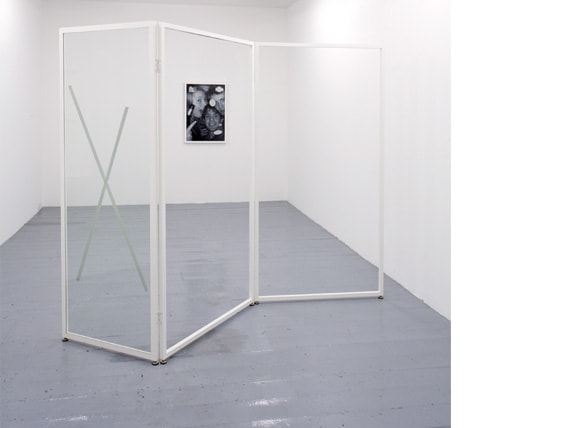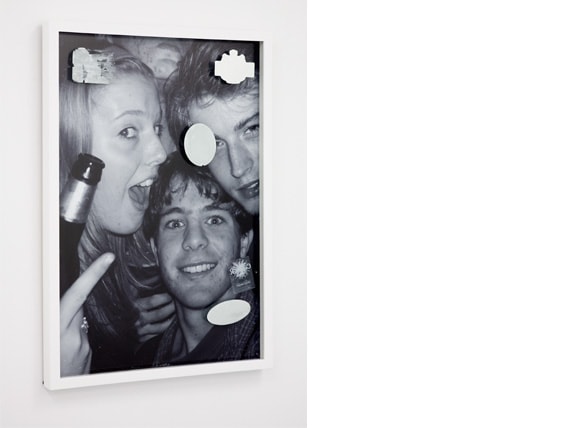exhibitions


STUDIO 12 | PAT FOSTER & JEN BEREAN
–
Studio 12 Exhibition
Pat Foster and Jen Berean: Studio Artists 2008-2009. To view their page click here
PAT FOSTER and JEN BEREAN
THE POLICE ARE THE PUBLIC
THE PUBLIC ARE THE POLICE
Catalog text produced for Gertrude Contemporary and Art and Australia Emerging Writers Program -
Pat Foster and Jen Berean seek to explore decay and erasure, aesthetisising the very act of destruction by producing a dramatically slick and considered outcome.
Hung on the back wall in the intensely lit space of Studio 12, The public are the police is a black and white picture of three pubescent teens in a moment of drunken embrace. It could have been taken during their eleventh round of drinks by a mobile phone camera digitally documenting a celebratory pause in a night of intense boozing. In between the picture and the glass that encases it, beer bottle labels are stuck facing in, only leaving the viewer with a shiny silhouette of their silver underside. It is as if we are allowed to peer into a moment of stasis, unaware and unable to discern what is about to happen. The possibility of uncontrollable damage and violence imbues the work with a sense of foreboding tension. It can be read as a work in a pre-damaged state exploring how social behaviour can influence physical form - ready to be smashed and broken from the inside out by its totally inebriated and carefree subjects.
Haphazardly strewn across the floor, miniscule shards of broken window glass and remnants of smashed beer bottles create unrecognisable scatter patterns of urban refuse. Bordered by a three-panel see through room divider, which acts as a visible yet fruitless attempt to serve its intended purpose, The police are the public becomes a rumination into the way in which urban decay and detritus can create a threatening physical environment.
The materiality of the work is foregrounded and overt as glass is both symbolically strong, yet physically vulnerable. But there is no narrative here between the two works; no before and after. Instead the works are an amalgamation of object, cause and effect exploring the psychological and physical barriers that attempt to demarcate public and private space – spaces which are becoming increasingly contested.
Our everyday experiences are often predicated on the opposition between destruction and re-generation – moments in time which lead to a dramatic shift in our physical surroundings erasing what was previously known to be now unknown. In the face of this, we often glaze over such moments, instead yearning for equilibrium to be maintained. Does decay have an air of inevitability about it existing only as an endpoint within an enclosed dialectical loop between erasure and repair? The act of destruction is in itself something that is often never fully considered. At its very base level, this is where trouble emerges, affecting and changing our urban fabric in a public and intensely visceral display. By distilling this uncontrollability into something that is heavily stylised, the works The public are the police and The police are the public both empty out the agency that this destructive action possesses, exploring how our ways of being are controlled and governed by our immediate physical surroundings.
Referencing the urban-sociological strategy called “Fixing Broken Windows” which revolved around the notion that the removal and elimination of the physical evidence of crime – graffiti, urban detritus and broken windows for example – would result in a decrease in more serious crime, Pat Foster and Jen Berean investigate how the idea of ‘prevention through repair’ is heavily embedded with mechanisms of power. Echoing Foucault’s notion of an all seeing eye, this strategy imposes defined power relations onto the individual through cleanliness and urban design rendering our shared social spaces into tightly controlled sites.
---
1. Discussion with the artists, 3rd July 2008
2. “Fixing Broken Windows” is an urban-sociological strategy devised by James Q. Wilson and George L. Kelling. It has been implemented across various cities in America including New York and San Francisco.
LEON GOH